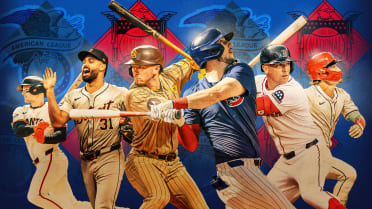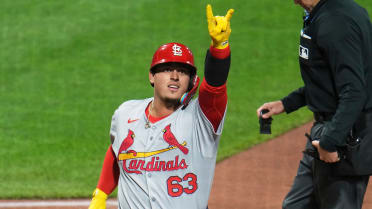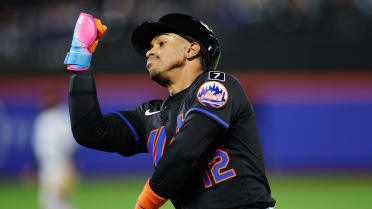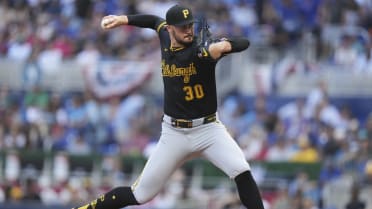PHILADELPHIA -- Brian Barber will be back on the road soon enough, looking for players for the Phillies to select in the 2025 MLB Draft.
He just finished the 2024 Draft on Tuesday.
2024 Draft presented by Nike:
Draft Tracker | First-round signings | All-time biggest bonuses
Pick-by-pick analysis: Day 1 | Day 2 | Day 3
Bazzana goes No. 1 | Wake Forest makes history | Mariners nab switch-pitcher | Top 7 Day 1 storylines | Best hauls | Our favorite picks | Famous family ties | Biggest steals | These picks could be new club No. 1's | Picks who could be quickest to bigs | Sons of Manny, Big Papi selected | Complete coverage
Here are five takeaways, including comments from Barber, the Phillies assistant general manager of amateur scouting:
1) Bats early, arms late
The Phillies did not take a pitcher until the eighth round. It is the longest they had gone in a Draft without selecting one.
Previously, they had never gone longer than six rounds. They took University of Minnesota right-hander George Klassen in the sixth round in 2023. They took Green Valley (Nev.) High School right-hander Jordan Parraz in the sixth round in 2003.
“When you start to look at the Draft, the better position players tend to go early,” Barber said. “So, if you want to be involved with those guys, you better take them early, the ones that you really like. You’re seeing it all around baseball, at the amateur level, at the professional level. There are just guys with better arms and more stuff out there, so you can wait on those a little bit longer than the position players that you like.”
Once the Phillies selected Georgia Tech left-hander Camron Hill in the eighth round, they went on a pitching run. Twelve of their final 13 picks were pitchers.
2) College players rule
The Phillies started the Draft by taking a pair of high school outfielders: Dante Nori in the first round and Griffin Burkholder in the second round.
They took college players the rest of the way. It is the first time the Phils have not selected a high school player after the second round.
“There were some college bats that we liked,” Barber said. “They lined up on the board as the right guy to take. Obviously, once you get to a certain point, signability becomes a big factor for you. But it was a combination of that and some of the college bats that we just really liked.”
The Phillies’ bonus pool ($7,381,800) ranked 27th in baseball, leaving them fewer resources to sign a high school player leaning toward a college commitment.
3) Locally sourced
The Phillies selected St. Joe’s right-hander Luke Gabrysh in the 15th round, Penn right-hander Eli Trop in the 16th round and East Carolina left-hander Erik Ritchie in the 19th round. Ritchie is a Sellersville, Pa., native and Souderton Area High School grad.
Gabrysh went 3-3 with a 6.10 ERA, striking out 37 and walking 20 in 41 1/3 innings. Trop went 3-2 with a 3.33 ERA, striking out 32 and walking 15 in 24 1/3 innings. Ritchie went 1-1 with a 6.67 ERA, striking out 33 and walking 27 in 29 2/3 innings.
“He’s been up to 97 mph,” Barber said about Gabrysh. “He spins the heck out of his slider. At that spot in the Draft, it was somebody we were definitely going to be interested in. Trop was going to transfer to the University of Texas. Hopefully we get him in the mix. He’s got some really unique qualities. He’s got what we call a magic fastball that guys have a hard time hitting.”
Gabrysh is the second Hawks player selected by the Phillies in MLB Draft history. They took second baseman Richard Kelly in the fourth round of the 1969 January Draft. Trop is the fourth Quakers player selected by the Phils. He joins catcher Austin Bossart (14th round, 2015), right-hander Paul Cusick (29th round, 2011) and right-hander Kerry Getter (13th round, 1972).
4) High ceiling or high floor?
Some college players are considered “high floor” talents, meaning they are safer picks with less upside. But the Phillies think they got “high ceiling” talents in Oklahoma shortstop John Spikerman (third round), and Virginia Tech shortstop Carson DeMartini (fourth round).
“Spikerman is an electric athlete with a really good set of tools,” Barber said. “The left-handed bat is probably ahead of the right-handed bat. We think we can really help him there. DeMartini has big power. … We see upside with each of those guys. It wasn’t playing the board safe, I can tell you that.”
5) Any starters?
Every pitcher the Phillies selected is considered a reliever.
“You get to a certain point in the Draft and you’re not getting a ton of starters with good stuff,” Barber said. “You are trying to find somebody, whether it be stuff-wise or a unique quality that they have, that gives them a chance to be a prospect.”
However, Barber said they have identified a few pitchers whom they think could throw multiple innings in the future.
Senior Reporter Todd Zolecki has covered the Phillies since 2003, and for MLB.com since 2009.




